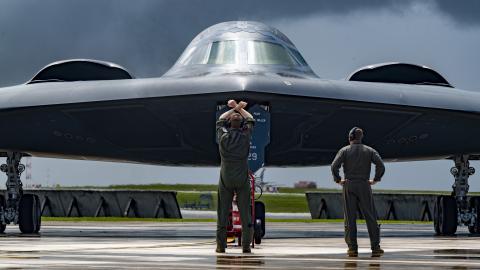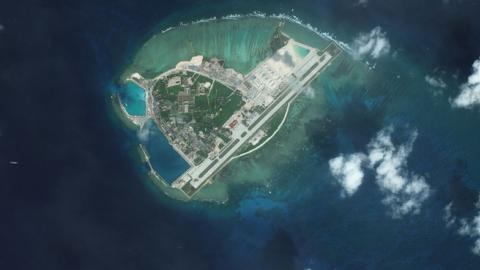A few weeks ago National Review published an essay of mine entitled “The Spratly Showdown,” on China’s latest aggressions in the South China Sea, where six different nations lay claim to one or another of the tiny Spratly Islands and where China has been working overtime to muscle out any competitors, including the United States.
Now it turns out we have another showdown brewing, this time in the nearby Paracel Islands. The Pentagon has just revealed that China has deployed a state-of-the-art anti-missile system on Woody Island in the Paracels, a move that marks the most serious step toward militarizing the South China Sea since the end of the Cold War.
The HQ 9 is a serious piece of hardware. It’s a two-stage active-radar surface-to-air missile with a 200 km range and a 180kg warhead, and comes with eight launchers of four missiles each. It also comes with a highly sophisticated search and targeting radar, the HT-233, that can point up to six different missiles at six different targets — a technology that, ironically, was almost certainly stolen from our own Patriot missile system.
The HQ 9 started life as an anti-ballistic missile, but it can be equally useful for targeting aircraft like the U.S. reconnaissance aircraft that, back in May, passed near Fiery Cross Reef in the Spratlys, where the Chinese are busy completing a runway suitable for military aircraft. Now they are saying, try something like that in the Paracels, and it may be the last flight you ever make.
The Chinese have occupied the Paracels since 1956, and even landed fighter jets on Woody Island last year. But the installation of the HQ9 sharply raises the geopolitical stakes — and raises the possibility that China won’t stop there. At least one analyst, Richard Fisher of the International Assessment and Strategy Center, says the next step is installing 400 km-range cruise missiles, and 1400 km-range anti-ship missiles, to convey the same stay-away warning to any U.S. Navy ships in the region. No one would be too surprised if similar installations don’t get underway in the Spratlys, as well.
And why not? So far the response to Chinese provocations in the South China Sea by the Obama administration has been weak and vacillating. The U.S., which has traditionally protected freedom of navigation in these busy international waters, has been made to look impotent — and the Chinese know the last thing the Obama administration wants is a confrontation and diplomatic dust-up with China on the eve of the 2016 election.
Our Secretary of State John Kerry has said he will be working the jurisdictional issues with China over the South China Sea, “through diplomacy.” In fact, China has already used diplomacy, missile diplomacy, to stake its claim to sovereignty over the entire area — and it now expects the United States to roll over and accept the situation.
As Humpty Dumpty said, the question is who is to be master. For now, the answer is China in the South China Sea. The real question the next presidential administration will have to answer, is whether that mastery extends to the rest of Asia, as well.
















